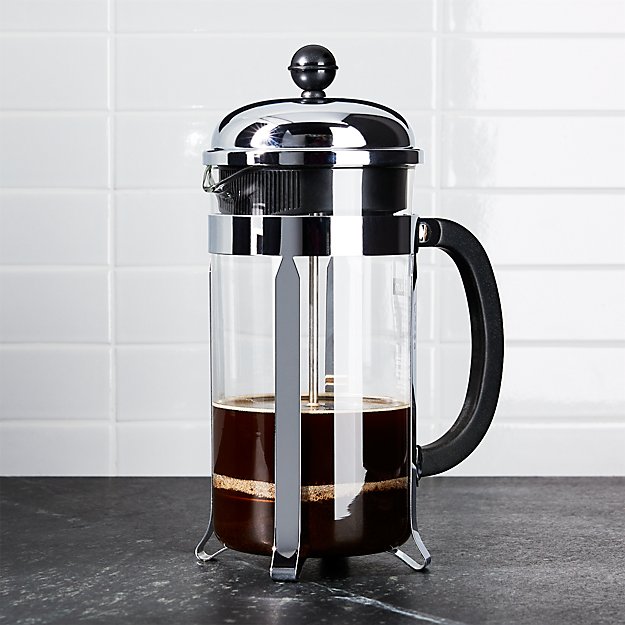For a bit of history, coffee was presumably originally discovered in the Arabian peninsula when a Sufi shepherd noticed his sheep and the birds nearby were gathered around a tree and acting keyed up. He came to a conclusion that this bean that fell from the tree made the sheep hyper when they ate it, and so he decided to try it, too. The coffee was then turned into kah'wa, a nomadic berber beverage made from heated water and the mush of bean from this tree, which gave way to the namesake we still use and enjoy today.
First, we will talk about regular brewed coffee. This is where a coffee bean is roasted from a green bean, cooled, and then ground into a coarse or fine grind to extract coffee in liquid form. The finer the grind, the more natural tannins and overtones will be released from the bean. This is why coarse ground coffee makes a really good coffee base for recipes or for mixed alcoholic drinks, a medium grind makes for a perfect cup of coffee, a medium fine grind makes a great cold brew, and a fine grind or Turkish grind makes for a perfect top of espresso or concentrate.
You also need to factor in the roast that you are using. Espresso roast is usually a darker roast, and the darker the roast, the stronger the coffee, but the less caffeine content there is. French roast is one of the darkest, and is essentially burnt coffee bean. Light roast and chaffed roasts have less of the traditional coffee flavor, but being that they are more related to their natural composition, they are a motherload of caffeine. This is especially helpful in the morning, which is why most breakfast blends are a light roast.
Then there are different pouring methods. You can make coffee in a variety of different manners. the most common place is a coffee machine, where a few scoops of coffee grounds are put into a filter, water is poured into a reservoir compartment, and then heated water is dripped onto the beans and pressed through the filter paper. this is done for a standard cup of coffee.
 |
| The Mr. Coffee 12-cup pot, as seen at Target. |
Next is the percolator, a huge vat of water that contains a steeping tray for coffee grounds at the top. The water is steamed inside the chamber, and rich coffee comes out the other side. This form of brewing was particularly popular in the 19th and 20th centuries when coffee shops were rampantly spread, and is still used today for larger batches of coffee.
| A modern percolator and strainer. Photo credits: Consiglio's. |
On a complimentary note, there are the Clover Brewing methods and pour-over Brewing methods. This is where super hot water is poured over a single batch of coffee grounds through a thinner filter and then squeezed into a coffee cup. This is usually one of the better methods for select brands of coffee, such as rare coffees or high altitude coffees.
 |
| An explanation of the Clover brewing method by Starbuck's 1912 Pike site. |
:max_bytes(150000):strip_icc():format(webp)/a-woman-is-pouring-turkish-coffee-in-to-a-vintage-turkish-coffee-cup-600103930-5825fe325f9b58d5b129c1a3.jpg) |
| Arabic coffee, like Greek coffee, is made from extremely fine coffee powder and hot water. |
Next, we have the K-Cup machine. This is a single pot of coffee grinds, tea leaves, that are put into a single serve machine in the form of a recyclable. Although this is not the best method for a cup of coffee, it gets the job done in a hurry.
 |
| The Traditional Keurig Machine. (Photo: Snapguide) |
Last in the form of regular coffee brewing is the French press. This is a continuation of the percolator, but in this instance, it is a smaller graduated cylinder. The coffee grinds and hot water are put into a carafe, and then a plunger with a filter is pressed down on to the grinds to extract be coffee juices from the bean. this is a perfect form of brewing for camping trips, and it's one of my personal favorites.
 |
| One example of a French Press, purchasable from Crate and Barrel. |
Next on the list is the cold brew method. This is where a large amounts of coffee grounds are combined with cold water and allowed to steep overnight, either in a fridge, and a cold dark place, or in a sunlit area. When brewed in the Sun, the coffee with mature through anaerobic respiration and starts to ferment a little bit which will release some acidic undertones.
 |
| Kitchn's take on Cold Brew Coffee. |
 |
| One of many examples of an espresso machine, as seen on Whole Latte Love. |
In my next post, I will talk about different types of espresso beverages. stay tuned for more!
No comments:
Post a Comment